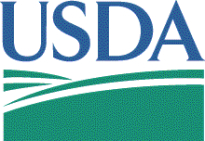The USDA has just released its Economic Research Service (ERS) report summary on food security for 2011. The report looks at the number of Americans who are “food secure”. The USDA monitors these conditions through an annual, nationally representative survey.
 Most households, 85.1%, were food secure throughout the year, meaning that they have “consistent, dependable access to enough food for active, healthy living.” In the remaining 14.9% of households, residents are food insecure. Members of those households have difficulty providing enough food for all members for lack of resources. The change from the 2010 report was not statistically significant. But the number of households in the severe range of food insecurity increased to 5.7% from 5.4%, which is a statistically significant increase. In 2000, the percentage of households with very low food security was 3%.
Most households, 85.1%, were food secure throughout the year, meaning that they have “consistent, dependable access to enough food for active, healthy living.” In the remaining 14.9% of households, residents are food insecure. Members of those households have difficulty providing enough food for all members for lack of resources. The change from the 2010 report was not statistically significant. But the number of households in the severe range of food insecurity increased to 5.7% from 5.4%, which is a statistically significant increase. In 2000, the percentage of households with very low food security was 3%.
The increases in numbers of very low food security were highest for women living alone, African-American households, and households with annual incomes below 185% of the poverty line, which is $23,050 for four people. Unfortunately, children were food insecure in 10.0% of all U.S. households, or 3.9 million households.
Households that experience food insecurity suffer that condition seven months out of the year, for a few days in each month. Fifty-seven percent of food-insecure households do participate in one or more of the three federal food and nutrition assistance programs (SNAP, WIC, and the National School Lunch Program).
Very low food security is defined as reporting six to eight or more food-insecure conditions, depending on whether the household had children. Of those households in this report, 97% reported that they food they bought did not last and they did not have money to get more, and 95% reported that they could not afford to eat balanced meals. And 27% of those households reported that an adult did not eat for a whole day because there was not enough money for food.
Some of the questions asked in the survey were interesting. One was “‘We worried whether our food would run out before we got money to buy more.’ Was that often, sometimes, or never true for you in the last 12 months?” Another asked, “In the last 12 months, were you ever hungry, but didn’t eat, because there wasn’t enough money for food?”




